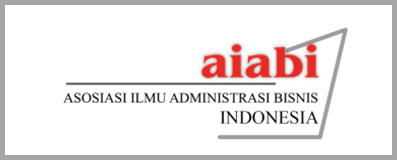Pemodelan Deteksi Krisis Keuangan di Indonesia Berdasarkan Indikator M2/Cadangan Devisa
DOI:
https://doi.org/10.31334/bijak.v16i2.511Keywords:
Crisis Detection, M2/International Reserves, Modeling, MRS-ARCHAbstract
The banking crisis reflects the liquidity crisis and bankruptcy of banks in the financial system. The financial crisis that occurred in mid-1997 resulted in a financial crisis that had a severe impact on the Indonesian economy. This made it aware of the importance of building a financial crisis early detection system to prepare for a crisis. The crisis occurs due to several macroeconomic indicators undergoing structural changes (regimes) and contain very high fluctuations. Combined volatility models and Markov regime switching are very suitable for explaining crises. The M2/international reserves indicator from 1990 to 2018 was used to build a crisis model. The results showed that the Markov regime switching autoregressive conditional heteroscedasticity model MRS-ARCH(2,1) could explain the crisis that occurred in mid-1997. Based on this model, in the future the crisis might occur if the M2/international reserves indicator decreased minimum of 13%References
Bollerslev, T. 1986. Generalized Autoregressive Conditional Heteroscedacity. Journal of Econometrics, 31(3): 307–327.
Chang, K., Cho, K.Y. & Hong, M.-G. 2010. Stock Volatility , Foreign Exchange Rate Volatility and the Global Financial Crisis. Journal of Economic Research, 15: 249–272.
Engle, R.F. 1982. Autoregressive Conditional Heteroscedasticity with Estimates of the Variance of United Kingdom Inflation. Econometrica, 50(4): 987.
Hamilton, J.D. 1989. A New Approach to the Economic Analysis of Nonstationary Time Series and the Business Cycle. Econometrica, 57(2): 357.
Hamilton, J.D. & Susmel, R. 1994. Autoregressive conditional heteroskedasticity and changes in regime. Journal of Econometrics, 64(1–2): 307–333.
Kaminsky, G., Lizondo, S. & Reinhart, C. 1997. Leading Indicators of Currency Crises. International Monetary Fund Working Paper No. 97/79.
Kawai, M., Newfarmer, R. & Schmukler, S. 2001. Crisis and Contagion in East Asia: Nine Lessons. The World Bank, Policy Research Working Paper Series: 2610. Washington DC.
Kim, C.J. & Nelson, C.R. 2017. State-Space Models with Regime Switching. The MIT Press.
Nelson, D.B. 1991. Conditional Heteroskedasticity in Asset Returns: A New Approach. Econometrica, 59(2): 347.
Sugiyanto, Zukhronah, E. & Sari, S.P. 2018a. Detection method of financial crisis in Indonesia using MSGARCH models based on banking condition indicators. Journal of Physics: Conference Series, 1025: 012118.
Sugiyanto, Zukhronah, E. & Setianingrum, M. 2018b. The detection of financial crisis using combination of volatility and markov switching models based on real output, domestic credit per GDP, and ICI indicators. Journal of Physics: Conference Series, 1025: 012115.
Tsay, R.S. 2010. Analysis of Financial Time Series. Wiley Series in Probability and Statistics. USA: John Wiley & Sons, Inc.
Downloads
Published
Issue
Section
License

This work is licensed under a Creative Commons Attribution-ShareAlike 4.0 International License
Please find the rights and licenses in Majalah Ilmiah Bijak By submitting the article/manuscript of the article, the author(s) agree with this policy. No specific document sign-off is required.
- License
The commercial use of the article will be governed by the Creative Commons Attribution license as currently displayed on Creative Commons Attribution-ShareAlike 4.0 International License.
2. Author(s)' Warranties
The author warrants that the article is original, written by stated author(s), has not been published before, contains no unlawful statements, does not infringe the rights of others, is subject to copyright that is vested exclusively in the author and free of any third party rights, and that any necessary written permissions to quote from other sources have been obtained by the author(s).
3. User Rights
Majalah Ilmiah Bijak spirit is to disseminate articles published are as free as possible. Under the Creative Commons license, Majalah Ilmiah Bijak permits users to copy, distribute, display, and perform the work for non-commercial purposes only. Users will also need to attribute authors and Majalah Ilmiah Bijak on distributing works in the journal and other media of publications.
4. Co-Authorship
If the article was jointly prepared by more than one author, any authors submitting the manuscript warrants that he/she has been authorized by all co-authors to be agreed on this copyright and license notice (agreement) on their behalf, and agrees to inform his/her co-authors of the terms of this policy. Jurnal Bijak will not be held liable for anything that may arise due to the author(s) internal dispute. Majalah Ilmiah Bijak will only communicate with the corresponding author.
5. Miscellaneous
Majalah Ilmiah Bijak will publish the article (or have it published) in the journal if the article’s editorial process is successfully completed. Jurnal Bijak editors may modify the article to a style of punctuation, spelling, capitalization, referencing and usage that deems appropriate. The author acknowledges that the article may be published so that it will be publicly accessible and such access will be free of charge for the readers as mentioned in point 3.
Every accepted manuscript should be accompanied by "Copyright Transfer Agreement"prior to the article publication.





1.png)




